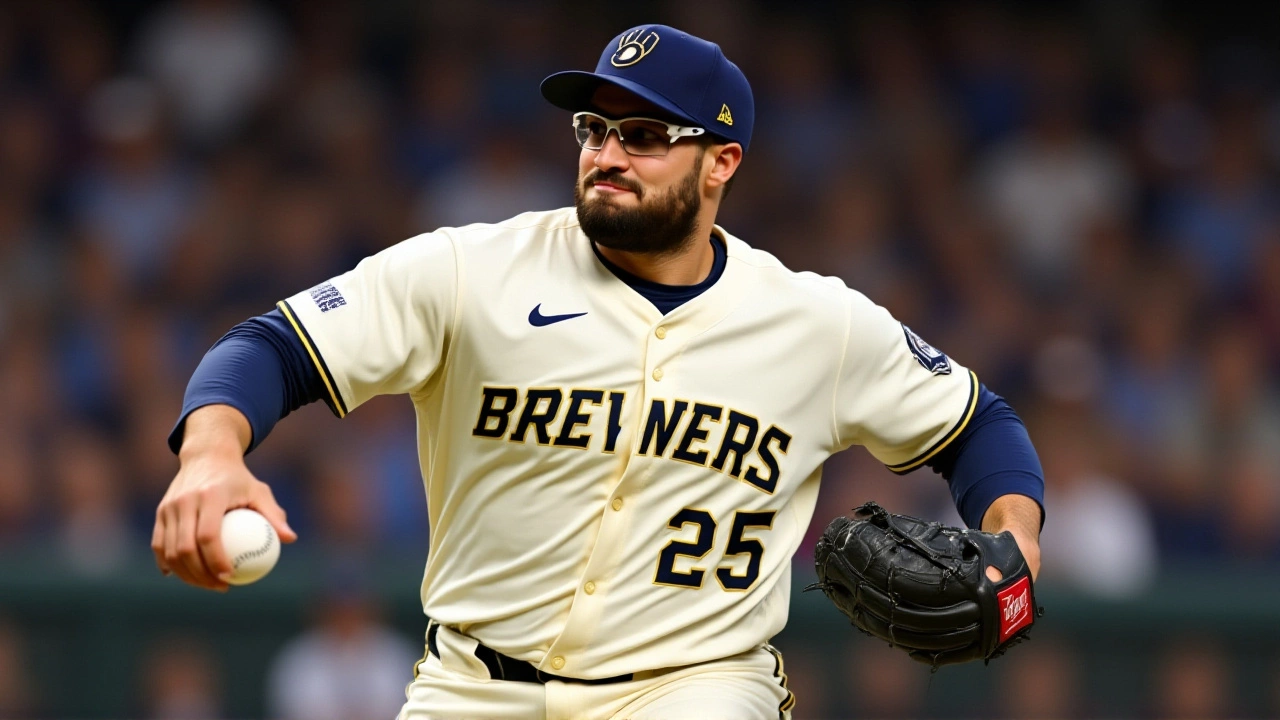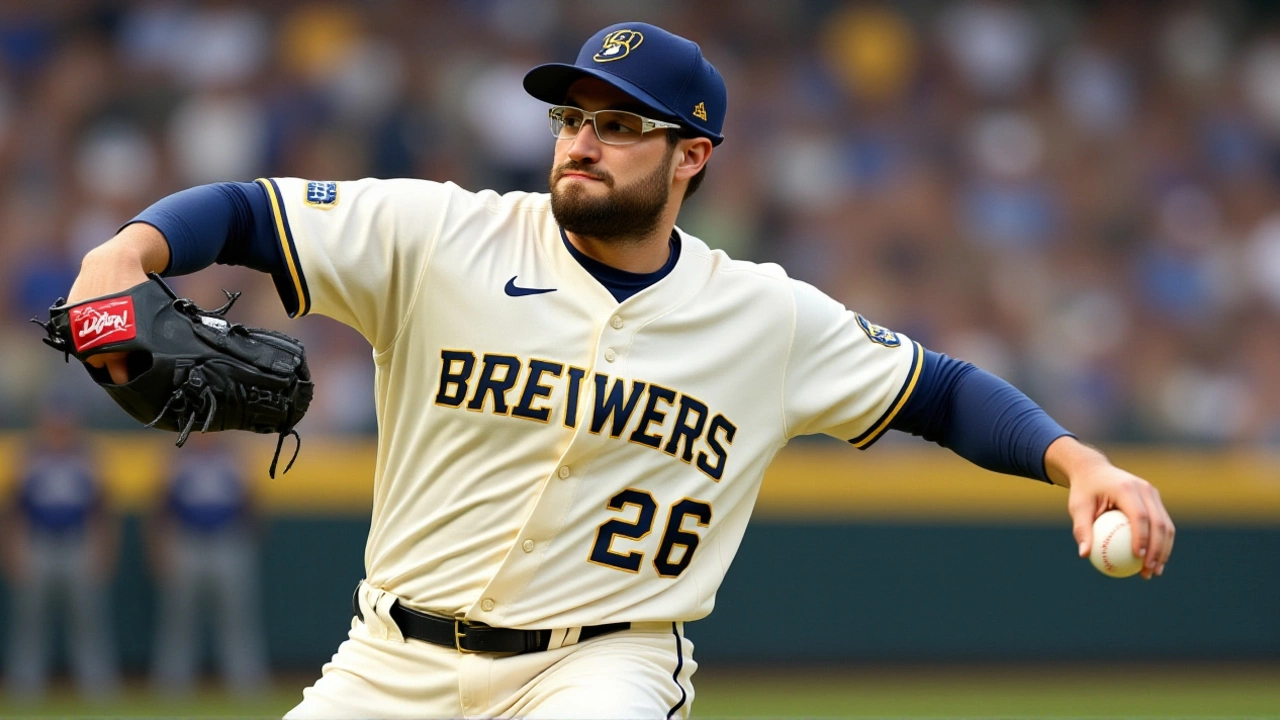When Aaron Ashby, the left‑handed fireball for the Milwaukee Brewers, was tapped to start Game 1 of the National League Championship SeriesAmerican Family Field, the buzz in downtown Milwaukee turned electric. The decision, announced on Monday, October 13, 2025, pitted Ashby against the Dodgers’ own left‑hander Blake Snell in a showdown that could determine who gets a shot at ending a 43‑year World Series drought.
Historical Context and Season‑Long Rivalry
Both clubs entered the NLCS riding high. The Los Angeles Dodgers rode the wave of a 2024 World Series triumph and were gunning for a rare back‑to‑back title – the first in a quarter‑century. Meanwhile, the Brewers, under 65‑year‑old manager Pat Murphy, had just survived a nail‑biting five‑game NLDS victory over the Chicago Cubs on October 11.
What made the matchup even juicier was the regular‑season sweep: Milwaukee went 6‑0 against Los Angeles in July 2025, becoming only the third team ever to sweep a five‑game or longer series against the Dodgers. That dominance, combined with a franchise‑long yearning for a World Series appearance since the 1982 loss to St. Louis, set the stage for a classic "David vs. Goliath" narrative.
Starting Pitchers and Strategic Match‑ups
Ashby’s assignment was no accident. Murphy explained that the Dodgers’ leadoff spots feature left‑handed sluggers Shohei Ohtani and Freddie Freeman. “We see two lefties in the first three slots, so it’s just the norm for us to start a southpaw,” Murphy said during the October 13 press conference. The plan was to let Ashby work the first three innings before handing the bulk to reliever Quinn Priester.
On the other side, Dodgers manager Dave Roberts stuck with Blake Snell for Game 1, knowing that a hard‑nosed right‑hander could neutralize Milwaukee’s heavy left‑handed rotation. He also announced that right‑hander Yoshinobu Yamamoto would start Game 2, while future starters Shohei Ohtani and Tyler Glasnow were slated for Games 3 and 4 at Dodger Stadium beginning Friday, October 18.
Beyond those two starters, both clubs kept their subsequent rotations vague. Murphy hinted at possibilities ranging from veteran left‑hander Jose Quintana to rookie right‑hander Paul Skenes, or even an opener strategy.
Game 1 Recap: A Tight Pitcher’s Duel
When the first pitch flew at 7:08 p.m. CDT on Tuesday, October 14, the atmosphere inside American Family Field was electric. Ashby kept the Dodgers off the scoreboard for the first three frames, issuing two walks but no hits. The Brewers’ offense, however, sputtered – a lone run came in the top of the fifth on a sacrifice fly by rookie Jacob Misiorowski.
That changed in the sixth. Dodgers first baseman Freddie Freeman launched a towering solo homer off right‑hander Chad Patrick, a ball that right fielder Jackson Chourio watched roll over the wall. The lead held, but the Dodgers weren’t done.
In the ninth, closer Abner Uribe — who earned his first multi‑inning save in Game 5 of the NLDS — was tasked with sealing the win. After a walk to Max Muncy and a single by Enrique Hernández, Roberts elected an intentional walk to Ohtani, loading the bases. Uribe then served up a walk to Mookie Betts, loading the bases with the go‑ahead run scoring on the forced walk. The Dodgers escaped with a 2‑1 victory.
Milwaukee’s bullpen, anchored by All‑Star closer Trevor Megill (who missed a month with a flexor strain), featured left‑handers Jared Koenig and Aaron Ashby, as well as promising rookies Jacob Misiorowski and Chad Patrick, who “took massive steps forward” during the NLDS, according to team reports.

Reactions, Analysis, and What It Means
Murphy, ever the poetic, summed up his team’s spirit: “They’re a bunch of average Joes, but I say they’re above‑average Joes.” The quote rang louder after the Brewers fell just short, yet many analysts noted that the narrow margin proves Milwaukee can hang with a defending champion.
Dodgers’ ace Roki Sasaki, listed as the top closer for the series, didn’t see action on back‑to‑back days, but his presence in the bullpen adds depth that could overwhelm Milwaukee in later games. Meanwhile, the Brewers’ reliance on left‑handed arms — Ashby, Koenig, and Patrick — may force Roberts to adjust his line‑up, possibly pulling Ohtani from the leadoff spot.
Statistically, the series is still a wash: both teams boast a .500+ OPS in the 2025 season, but the Dodgers’ bullpen posted a league‑best 2.88 ERA, while Milwaukee’s staff hovered at 3.75. If the Brewers can tighten their defense and capitalize on late‑inning opportunities, the series could tilt back in their favor.
Looking Ahead: What Comes Next?
Game 2 is slated for Tuesday night, October 15, with right‑hander Freddy Peralta taking the ball for Milwaukee. The Dodgers will counter with Yoshinobu Yamamoto. If the Brewers can bounce back, they’ll need to generate runs early — a task that could involve moving Ohtani up in the order or inserting a small‑ball specialist.
Beyond the NLCS, the winner earns a chance to dethrone the Dodgers at the World Series. For Milwaukee, that would be the franchise’s first title since 1982; for Los Angeles, it would cement a dynasty never before accomplished since the early 2000s.
- Key Facts
- Game 1 starter: Aaron Ashby (Brewers) vs. Blake Snell (Dodgers)
- Final score: Dodgers 2, Brewers 1
- Location: American Family Field, Milwaukee, WI
- Series lead: Dodgers up 1‑0
- Historical note: Brewers went 6‑0 vs. Dodgers in July 2025
Frequently Asked Questions
How does Aaron Ashby’s start affect the Brewers’ chances in the series?
Ashby’s left‑handed arsenal directly counters the Dodgers’ left‑handed power hitters, giving Milwaukee a tactical edge in the early innings. However, his limited outing in Game 1 shows the Brewers still need deeper bullpen support to maintain a lead.
What adjustments might the Dodgers make after the Game 1 loss?
Roberts could shuffle Shohei Ohtani higher in the order to neutralize the Brewers’ left‑handed pitching, or lean on his bullpen’s depth—especially Roki Sasaki—to close out tighter games.
Will the Brewers’ 6‑0 regular‑season record against the Dodgers translate to postseason success?
The regular season sweep gave Milwaukee confidence, but postseason pressure is a different beast. Pitching depth, timely hitting, and defensive solidity will be the new determinants of success.
Who are the key players to watch in the upcoming games?
For Milwaukee, left‑hander Jared Koenig and rookie Jacob Misiorowski could provide a spark. For Los Angeles, power hitters Shohei Ohtani and Mookie Betts, along with closer Roki Sasaki, remain pivotal.
What does this series mean for the broader MLB landscape?
A Brewers win would break a 43‑year World Series drought and signal a shift toward smaller‑market competitiveness. A Dodgers victory would cement their status as the first back‑to‑back champs since the early 2000s, reshaping dynastic narratives.
